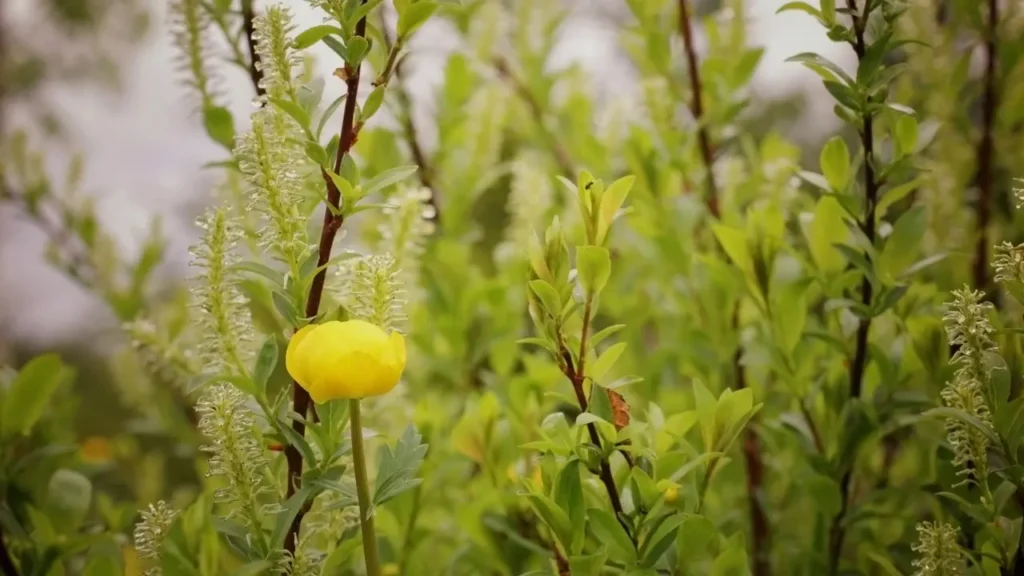The globe flower, or trollius europaeus, is a fascinating topic in herbal and complementary medicine. It is a perennial plant in the ranunculaceae family. This bright yellow flower with a ball-like form is indigenous to Europe and Western Asia. It grows well in soggy meadows, moist forests, and along streams. Globe flower has a fascinating history of traditional medical use in addition to its visual appeal. This article’s goal is to examine the properties of the globe flower, its health advantages, the best dose, any potential interactions, as well as the chemical and physiological properties that underlie its effects.
You May Also Like:
What Are the Best Mushrooms for Brain Health? Here Are the Facts.
Tagetes: Benefits, Dosage, Side Effects, Drug Interactions, and Other Important Information
Globe Flower: Benefits, Dosage, Side Effects, Drug Interactions, and Other Important Information is an original (NootropicsPlanet) article.
Nature of Globe Flower
The distinctive spherical bloom is what gives the globe flower its name. The plant can reach a height of 60 cm, and its leaves have several deep lobes. The eye-catching, golden yellow blossoms emerge in late spring and early summer. The chemical components of the plant, flavonoids, alkaloids, saponins, and tannins, are what give it its potential therapeutic effects.
Health Benefits of Globe Flower
Respiratory Health: Flavonoids, a class of plant compounds included in globe flowers, have long been known for their ability to reduce inflammation and to act as antioxidants. These effects are advantageous for respiratory illnesses like bronchitis, where oxidative stress and inflammation play important roles.
Skin Health: The globe flower’s high tannin content has been used to treat skin issues. Tannins have astringent properties that can help tighten and dry up the skin, which is advantageous for disorders like eczema.
Digestive Health: Dyspepsia has been treated with the globe flower in traditional medical methods. The plant’s all-around anti-inflammatory properties can be involved, however the specific processes are yet unclear.
Management of Fever: The globe flower has a long history of use as a febrifuge—a substance that lowers fever. Its flavonoid content, which has been linked in certain studies to a reduction in fever, may be the reason for this impact.

Chemistry of Globe Flower
The unusual chemical makeup of the globe flower lies at the core of its therapeutic benefits. Flavonoids, tannins, saponins, and alkaloids are the main chemical classes present in the globe flower.
Flavonoids are a broad class of plant metabolites well known for their anti-inflammatory, immune-stimulating, and antioxidant effects. These phytonutrients help many fruits and vegetables, especially the golden color of the globe flower, to give it its brilliant coloration.
Tannins are polyphenolic chemicals that belong to another group of compounds found in the globe flower and are frequently linked to the astringency of particular meals and drinks. Due to their ability to precipitate proteins, they have antioxidant properties and are known to protect mucosal membranes like the skin.
Physiological Properties of Globe Flower
Understanding the physiological properties underlying the globe flower’s medicinal uses requires a closer look at how its constituent compounds interact with the body’s systems.
Flavonoids: These substances are well-known for their antioxidant properties, which include disarming the body’s dangerous free radicals. This plant can have many advantages for respiratory health and fever control because of its antioxidative properties, which lower oxidative stress and inflammation. Additionally, certain flavonoids have the ability to alter immunological responses, which is why people have traditionally used the globe flower to treat respiratory issues like fever and coughing.
Tannins: Tannins primarily act by way of their astringent properties. They cause proteins to precipitate, which results in the creation of a barrier across the skin or mucous membranes. This property can be beneficial in controlling skin disorders like eczema, where a decrease in inflammation and protection from irritants are essential.
Saponins: These chemicals can reduce inflammation and alter immunological response, which is why the globe flower has historically been used to treat gastrointestinal and respiratory issues. Further research is needed to determine the specific purposes for the saponins found in globe flowers.
Alkaloids: Although these substances can be medicinally useful in tiny amounts, consuming them in large quantities can be hazardous. They are thought to disrupt cellular metabolism, which can result in a number of negative effects if intake is not properly controlled. This emphasizes the significance of using globe flower as a supplement according to the recommended amounts.

Optimal Dosage of Globe Flower
There is no recognized universally ideal dose for the globe flower because there hasn’t been enough research performed on it that includes clinical trials and testing. The dosage may change based on the preparation technique, the illness being treated, and personal characteristics including age, weight, and general health. It is essential to speak with your medical professional or a licensed herbalist when thinking about globe flower as a supplement for health.
Side Effects of Globe Flower
The globe flower contains alkaloids that can be hazardous if ingested in high quantities or over an extended length of time. GI distress, skin rashes, and in extreme circumstances, liver damage, are examples of possible side effects.

Potential Interactions
There may be more compounds with which the globe flower interacts. Its tannins have the ability to bond with certain minerals, potentially decreasing their absorption and potency. Similarly, it could prevent some drugs from being absorbed, especially oral ones.
Best Responsible Use
Even though it is an intriguing example of a botanical specimen, the globe flower also has intriguing medicinal potential. Its potent chemical makeup supports its long-standing use for managing fevers, as well as for maintaining digestive, skin, and respiratory health. Due to potential negative effects and interactions, however, it should be used carefully and always with a doctor’s approval. The globe flower is a representation of nature’s pharmacy, which is ripe with therapeutic possibilities, yet needs further and careful research. Our understanding of the advantages, ideal use, and safety profile of this fascinating plant may deepen as research progresses.
Globe Flower:
Conclusion
It is important to keep in mind that the glycoside chemicals known as saponins, which are also present in globe flowers, are known for a variety of biological benefits, including their ability to reduce inflammation and modulate the immune system. Last but not least, many plants have therapeutic and, in some circumstances, poisonous alkaloids, nitrogenous chemical molecules that are often basic in nature. Because of this, it is crucial to talk to a doctor before starting globe flower supplementation to avoid any negative consequences.

References:
- Flavonoids: an overview. Retrieved From: https://www.ncbi.nlm.nih.gov/pmc/articles/PMC5465813/
- Globe Flower (Trollius europaeus). Retrieved From: https://www.cabi.org/isc/datasheet/54237
- There isn’t enough information to know how globe flower might work as a medicine.link:https://www.webmd.com/vitamins/ai/ingredientmono-657/globe-flower
Important Note: The information contained in this article is for general informational purposes only, and should not be construed as health or medical advice, nor is it intended to diagnose, prevent, treat, or cure any disease or health condition. Before embarking on any diet, fitness regimen, or program of nutritional supplementation, it is advisable to consult your healthcare professional in order to determine its safety and probable efficacy in terms of your individual state of health.
Regarding Nutritional Supplements Or Other Non-Prescription Health Products: If any nutritional supplements or other non-prescription health products are mentioned in the foregoing article, any claims or statements made about them have not been evaluated by the U.S. Food and Drug Administration, and such nutritional supplements or other health products are not intended to diagnose, treat, cure, or prevent any disease.


